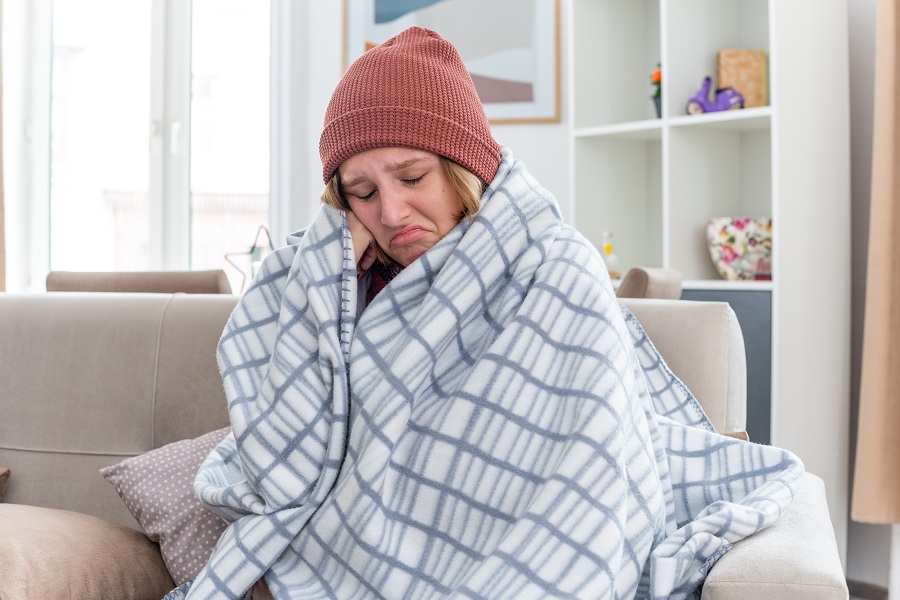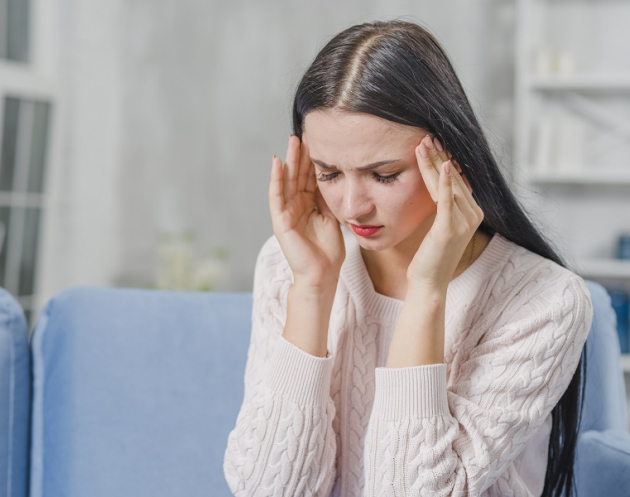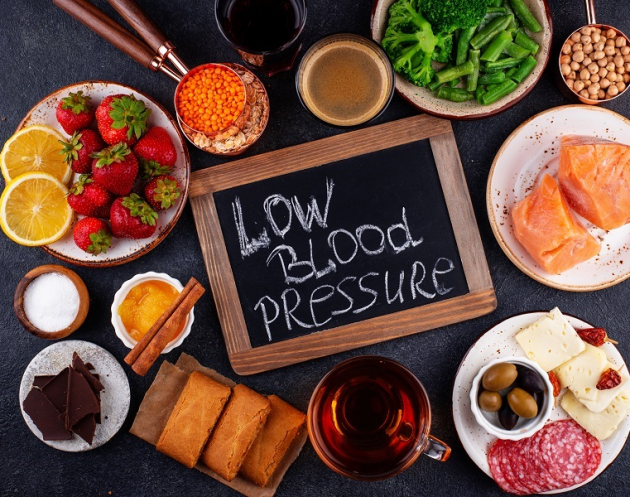How to lower the fever ? Sooner or later we all ask ourselves this question because it happens to everyone to have a high temperature or to have someone with a high temperature next to us, especially children.
There are many over-the-counter drugs called antipyretics that are made to lower it in a short time but there are also many useful tips to follow in the case of high fever to keep it under control and many natural remedies that you can use so that it takes its natural course, without causing too much pain.
However, it is important to know the triggering cause of the fever, because this is only the symptom of a malaise that must be identified and treated. Let’s get to know this symptom well and treat it as best we can.
What is fever
The term fever indicates an increase in body temperature above the values considered normal. In fact, in our organism there is a thermoregulation system capable of keeping it within 35 ° -37 °.
During the day it can undergo fluctuations (lower in the early morning, higher in the afternoon), and also varies according to age, physical activity, hormones, stress and digestive phase. Furthermore, it is different depending on the point in which the detection is carried out (armpit, forehead, undertone or rectal).
We can then define various feverish states depending on the temperature:
- 37 ° – 37.4 ° is equivalent to a subfebrile state
- 37.5 ° – 37.9 ° is equivalent to a low-grade fever
- 38 ° – 38.9 ° is equivalent to a state of true fever
- 39 ° – 39.9 ° equals a state of high fever
- above 40 ° are equivalent to a state of hyperpyrexia
Fever is a form of defense that the body puts in place if bacterial or viral infections are present, following surgery or trauma, for dehydration, heat stroke, and in the case of brain injuries in the thermoregulation center.
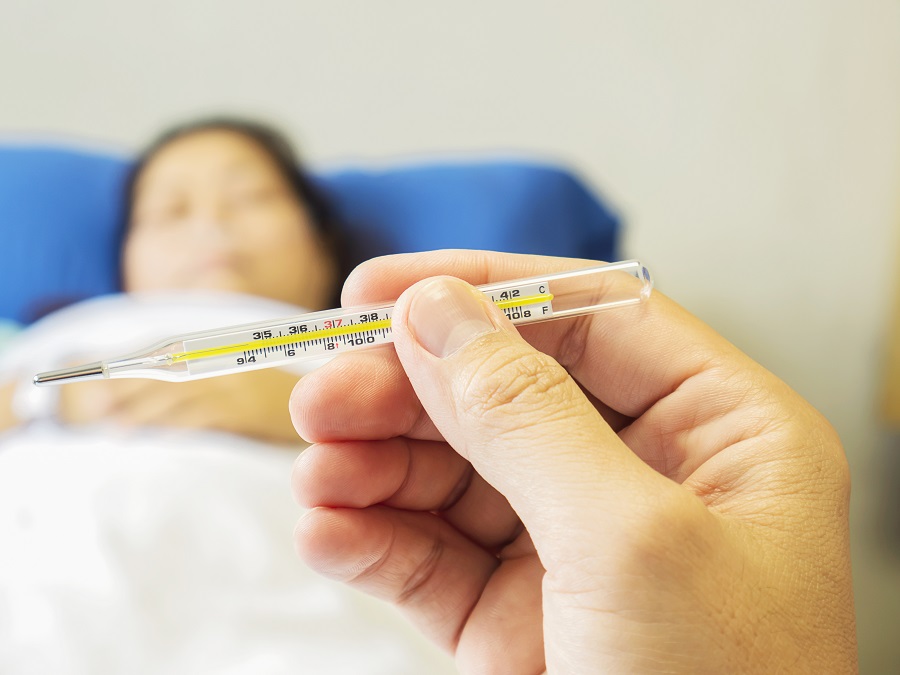
How fever occurs
Body heat is also needed to activate the immune system and stimulate the production of white blood cells, which are the cells responsible for destroying pathogens.
In the face of a dangerous situation (infection, dehydration, heat stroke….) A message from the prostaglandins to raise the body temperature arrives at the thermoregulation center located in the hypothalamus . This organ triggers a series of actions aimed at accelerating metabolic reactions, to quickly consume energy reserves and thus enhance the action of the immune system in defense of the organism.
It is accompanied by a series of changes that serve to raise the temperature, such as increased heart rate, chills and muscle contractions, which result from skin vasoconstriction and the production of endogenous heat. This is why we feel cold at the beginning of the temperature rise.
When the temperature stabilizes, the sensation of cold disappears, the skin is hot and red, and sweating, headaches, muscle pains may also appear, accompanied by an increase in heart and respiratory rate.
Natural or drug-induced febrile, bringing the threshold of sensitivity to thermal stimuli of the thermoregulatory center neurons back to 37 °, can be accompanied by considerable vasodilation and sweating.
Once these mechanisms are effective in defeating the attack, the reverse processes are activated, in particular the vasodilation and sweating that serve to disperse excess body heat into the environment.
How fever manifests itself
A rise in temperature may simply occur, but beyond 38 ° it is associated with other annoying symptoms such as:
- increased heart and respiratory rate
- dry and hot red skin
- poor urinary elimination
- lack of appetite
- increased thirst and dry tongue
- shiny eyes
- headache
And if it exceeds 40 °, convulsions can also occur.
When to lower the fever
When the temperature exceeds 38.5 ° or there is particular pain and fatigue, then it is appropriate to take action to lower it, through antipyretic drugs or natural methods.
On the contrary, in the presence of low-grade fever, up to 38 °, even in children, it is better to do nothing, because the effect of slowing down the recovery from the real cause of the rise in temperature could be obtained.
In general, children can endure very high temperatures, while in the elderly it is good to lower the fever immediately, because they easily undergo dehydration phenomena that can have serious consequences.
How to lower a fever
The body temperature can be lowered thanks to various natural remedies and for the course there are some practical tips to follow.
You can use antipyretic drugs, over-the-counter products sold without a prescription, which quickly lower the temperature and reduce other symptoms of malaise such as headaches and muscle aches. The most common are non-steroidal anti-inflammatories based on paracetamol, ibuprofen or acetylsalicylic acid , which have several trade names.
It is important to always emphasize that drugs and natural febrifugees alone do little, because they only deal with the symptom and do not solve the causes. In front of a patient who has other symptoms (cough, runny nose, joint pain, headache, stomach pain, nausea …), a complementary therapy will therefore also be needed to counteract the disorder that led to the rise in temperature. . And for this you need to consult a doctor.
Warning: however, if the fever does not go down, it is advisable to call your doctor.
Practical tips for lowering fever
The grandmother’s remedies that have always been used to control fever in both children and the elderly are these:
- drink plenty of water so as not to get dehydrated; in particular you have to drink 1 glass of water every hour because the body with a fever sweats and loses fluids and mineral salts . If you are older it is better to drink even more, almost 2.5 liters of water
- wear light clothing and do not cover yourself too much to release heat into the environment
- absolute rest so as not to consume energy: this is valid advice because the body is subjected to greater stress and the metabolism consumes up to 12% more calories than normal daily activity. So you have to stay at complete rest.
- sponging on wrists, feet and temples with warm water or even a warm, not cold bath. The effect is perceived immediately but does not last long
- compresses of water and vinegar on the feet for 10 minutes, in the past the socks were soaked in the solution of water and vinegar and made to wear by those who had a fever!
- eat light and easily digestible foods especially hot soups and fresh fruit such as kiwifruit and orange rich in vitamins and minerals, to replenish those lost in sweating.
- eat probiotic foods , such as yogurt, cabbage , soy , and sauerkraut , and avoid foods high in saturated animal fat and drinks containing caffeine and alcohol instead.
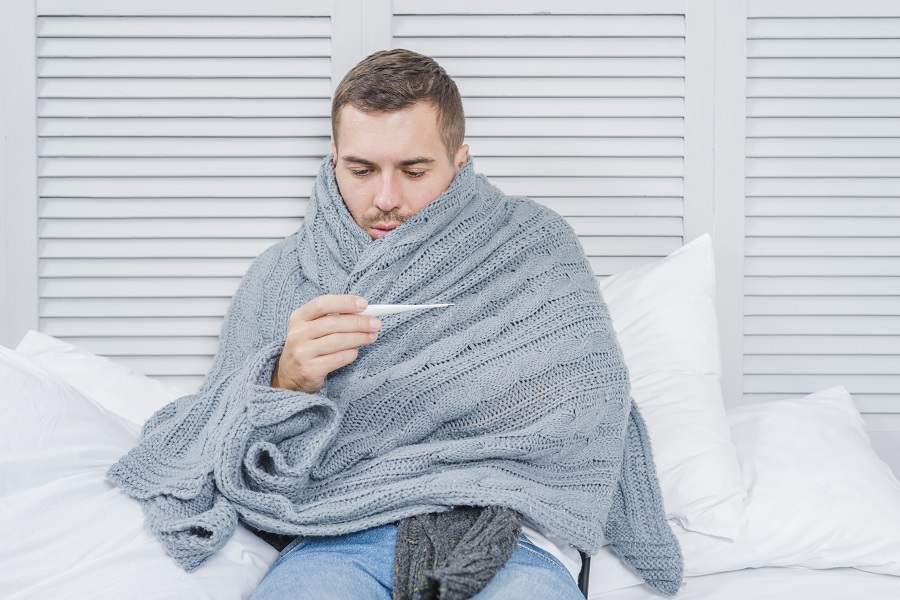
Lower fever in children naturally
To reduce the body temperature in children, we need to help them to disperse excess heat. For this you need to:
- avoid covering it too much
- make him drink a lot: water, but also fruit juices, freshly squeezed tea or chamomile or linden tea
- keep it on a diet they don’t need to eat more than they require
- let it rest in an airy and not too hot environment
- practice sponging and refreshing frictions if necessary
Children usually heal with these practical natural remedies and they don’t need anything else. If, on the other hand, the fever lasts beyond 2-3 days, the pediatrician must be called.
It is also possible to treat the child with homeopathic products. Also in this case it is necessary to contact a doctor who specializes in homeopathy .

What to eat to lower fever
The diet to follow in case of fever is really important and serves to keep the body well hydrated during this period of hyper-sweating. It must also provide the nutrients needed to gain energy.
First of all it is recommended to take
- water at least 2 liters per day
- fruit juices and smoothies , possibly homemade, taking them often and in small quantities
- herbal teas and infusions
- fruit with a high intake of vitamin C , especially kiwis and oranges
- vegetables rich in beta-carotene such as tomatoes
- vegetables with a high concentration of vitamin A such as parsley, mango, broccoli, papaya
- onions and garlic for their natural antibiotic properties
- fruits rich in beta-carotene such as melon, apricots, berries, carrots, cabbage, medlar and spinach for
- dried fruit such as walnuts and hazelnuts, pistachios for the concentration of potassium and vitamin E
Foods should be avoided during feverish states:
- rich in especially white sugar , which is devoid of vitamins and useful minerals
- milk, dairy products and derivatives, since they would aggravate the distribution of liquids
- meat, salami and sausages
Lower fever with medication
If the fever is very high, it is possible to intervene to help our body by taking antipyretic drugs and therefore with an active ingredient capable of reducing fever and feverish states. They are over-the-counter products, freely sold in pharmacies, but if you have never taken them, it is always recommended to ask your doctor first.
The active ingredient par excellence in these cases is paracetamol , followed by acetylsalicylic acid and then ibuprofen. Antipyretics work by causing peripheral sweating and vasodilation, inhibiting the synthesis of prostaglandins. For this reason they have a limited effect in time, being the fever triggered by the central nervous system to protect the organism from an infection.
But let’s see in detail:
Paracetamol: widely used, it is safe for both adults and children, including infants, the elderly and pregnant women. It is able to lower the temperature in a short time and also acts as an analgesic and painkiller. However, it has contraindications and side effects and can cause allergies. This is why it is always necessary to seek medical advice, especially the first time you take it.
Acetylsalicylic acid : is the active ingredient of the famous Aspirin and other drugs, belongs to the group of salicylates. It is an NSAID (non-steroidal anti-inflammatory drug) that relieves all the symptoms that accompany a fever, such as headache, flu, cold. Also in this case it is better to refer to the doctor, because it can cause even serious allergies. It cannot be given under the age of 12 as it can cause Reye’s syndrome.
Ibuprofen : Recommended for adults and children to treat fever and flu like colds. Seek medical advice to identify the presence of any contraindications and allergies.
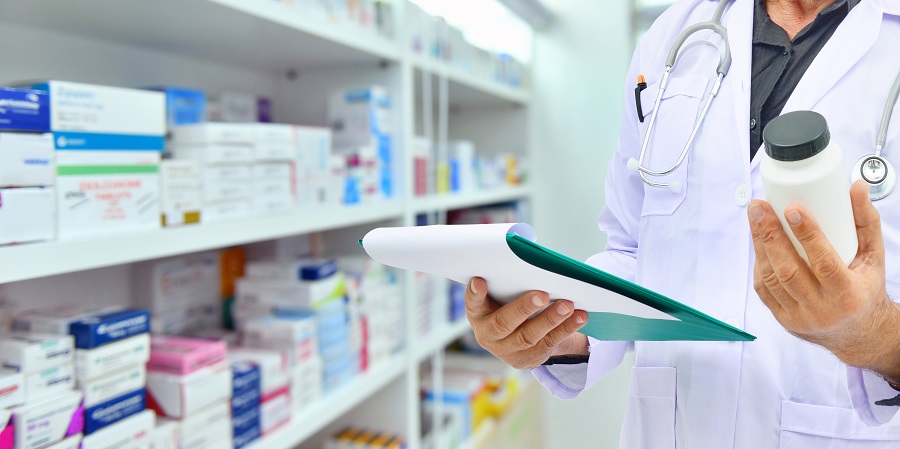
Lower fever with natural remedies
There are many herbal remedies to lower the body temperature and give relief
In particular, the so-called diaphoretic drugs or medicinal plants that have the ability to stimulate high sweating, thus dispersing the body’s heat into the environment and decreasing fever, can help.
Herbal teas
These plants are usually taken in the form of tisane served lukewarm. The recommended plants are:
- chamomile
- cinnamon
- centaurea
- eucalyptus
- genziana
- mint
- rhododendron
- tiglio
Even when taking herbal teas based on medicinal plants it is better to ask your doctor, especially if you are pregnant or breastfeeding, or if you suffer from diseases and are following drug therapies.
Medicinal herbs
In addition to herbal teas, there are medicinal plants that are really useful for lowering fever;
belladonna : it is a very effective remedy to soothe the symptoms of cold and fever syndromes. Belladonna is a poisonous plant that contains 3 alkaloids: scopolamine, atropine and hyoscyamine. The mother tincture or the granules are used.
Elderberry extract : elderflower extract has very useful properties for the well-being of the upper respiratory tract (almost always involved in febrile syndromes); moreover, the intake of elderberry extract has a positive effect on the regulation of sweating and consequently on the body’s thermoregulation process.
willow bark : rich in salicylates, from which salicylic acid, or the active ingredient of aspirin, is also derived. The bark of the willow is used from which an extract is obtained that can be used alone or in combination with other herbs (echinacea, cinchona) to enhance its effect.
cinchona bark: also cinchona , like willow, uses the bark which has a very important effect on the regulation of vasodilation and sweating, thus managing to lower fever.
spirea ulmaria : it is considered a vegetable salicylate (the term aspirin seems to derive from this plant). The active part of the meadowsweet is the inflorescence which is very effective in lowering the fever. Unlike synthetic salicylates, it has no harmful effects on the stomach thanks to the presence of mucilages that carry out a protective action on the gastric mucosa.
uncaria tomentosa or cat’s claw : it is a plant with a strong immunostimulating power, very useful both to prevent and to counteract the flu syndrome and cold symptoms. The part of the uncaria used in herbal medicine is the bark from which an extract is obtained.
nettle in capsules or powder to add to soups after cooking
Homeopathic remedies
Homeopathic medicine offers a number of principles for reducing fever in both children and adults. The treatment should be followed after consulting the homeopath.
Let’s see what are the homeopathic solutions to lower fever:
- yarrow : it is a perennial herb with countless beneficial properties including regulating body temperature. In homeopathy it is used in the form of dry extract, mother tincture, decoction or powder. But be careful because it is contraindicated in pregnancy and breastfeeding.
- aconitum napellus is a perennial grassy plant with characteristic blue flowers, it contains an extremely poisonous substance called aconitine , once used to poison spears and arrows. Aconite is the most used in homeopathy against high fever.
- apis is the mother tincture obtained by diluting bee venom in alcohol: indicated in case of high fever associated with pharyngitis or laryngitis.
- bryonia is a climbing plant that features poisonous red roots and berries. To obtain a homeopathic remedy, mother tincture is made from the roots. Reduces fever when it is not very high, but persistent.
- ferrum phosphoricum is a slate-gray powder that is recommended in the initial stages of flu syndromes with not very high fever, fatigue and joint pain
When to call the doctor
If the fever does not go down naturally and even after taking antipyretics, a doctor should be called.
In the case of children it is necessary to contact the pediatrician in any case of doubt. In particular, it is advisable to call the pediatrician if the child:
- is younger than 3 months always call your pediatrician
- the age is less than 3 years and the temperature above 38 ° does not pass after 48 hours
- is over 3 years old and has a fever over 38 ° for over 3 days
- she cries and cannot calm down
- difficulty breathing
- have seizures or move an arm or leg with difficulty
- vomits and has symptoms of dehydration
- faints
In the case of adults it is necessary to call a doctor if you have:
- fever above 40.5 °
- low-grade fever has continued for several days
- convulsions
- severe breathing difficulties
- particularly severe headache
- there are additional symptoms such as cough, ear and throat pain
- blue tongue and nails
- jet vomit
- does not stay awake and manifests confusion
- in the presence of other pathologies such as heart disease, diabetes or recent transplants, seropositive or in chemotherapy
- pain in urination



